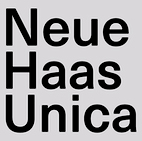TYPE DESIGN INFORMATION PAGE last updated on Fri Nov 14 13:21:49 EST 2025
FONT RECOGNITION VIA FONT MOOSE
|
|
|
|
Haas Unica: The story
This story is taken from the Lineto web site in 2015, just after the digital revival Unica 77 (Christian Mengelt) was published by them. All italic text are verbatim quotes. The underlying thread is a huge fight between Haas and Linotype, with on the Haas side, the Swiss outfits Team 77 and Lineto, and on the Linotype side, the corporate heavyweight. Lineto / Team 77 writes: We are proud and honoured to release Unica77, created by Christian Mengelt of Team 77, the original authors of Haas Unica. Some see Unica as the pinnacle of modernist type design, arguably the most modern and the most Swiss typeface: the idea of a «pure medium», a «neutral carrier». Unica was the typeface that finally delivered what Helvetica had only promised, at a moment when, in a bizarre twist of fate, no-one was looking. And released for a fading technology at a time of transition, it was soon relegated to undeserved obscurity. The tragic story of Haas Unica is one of technological progress, economic pressure, corporate powerplay, bad timing, and unfortunate coincidences. It's the dark side of Helvetica's bright success story. Helvetica had been secretly developed at the Haas Foundry in the mid-1950s, against the will of Stempel, their majority stakeholder. First presented as Neue Haas Grotesk, in 1957, it was a sensational success. Haas, a relatively small enterprise depending on cooperation and licensing deals, licensed it to Linotype for worldwide exploitation, who adapted it and turned it into the fabled Helvetica. However, Linotype prevented Haas from producing Helvetica for the now prevalent phototypesetting technology, and as a consequence, Haas was denied any major share of its global success. In 1973, Alfred Hoffmann of the Haas type foundry had enough. He invited the prolific type designers André Gürtler, Christian Mengelt, and Erich Gschwind to investigate improving Helvetica for phototypesetting, and to propose a new typeface optimised for the dominant technology of the day. Their thorough analysis of four formally related typefaces (Akzidenz Grotesk, Univers, Neue Haas Grotesk and Helvetica), later published in the document «From Helvetica to Haas Unica», served as foundation for the synthesis of the brilliant new typeface, its name an amalgam of Univers and Helvetica. But by the time Bobst/Autologic (for their Eurocat system) and Linotype (for their Linotronic range) came out with Haas Unica, the days for phototypesetting were numbered. The personal computer was on its way to radically alter the design and printing professions, and in 1984 the Apple Macintosh promised a new dawn for type design. Haas Unica fell into the gap of this transitional period. It had taken six years from commissioning to foundry release, and when it came out, the world was ready to move on. The shift from analogue to digital turned the industry upside down. In rapid succession, companies went bankrupt, were taken over, stripped of their assets, and sold down the river. Four years after launching Haas Unica, Haas’ business partner Stempel was sold to Linotype. Haas, one of the world's oldest foundries with a back catalogue of sheer excellence, was taken over and terminated in 1989. Haas Unica disappeared, and its designers' appeals to Linotype for a digital reissue bore no fruit---it remained buried for close to 30 years. But it was not forgotten. As avid users of type, we often wondered why Haas Unica wasn't available on the market. In 2004, Berlin-based designer and Lineto partner Stephan Müller came across a digital version in a Scangraphic specimen book. As it wasn't available to buy, he sourced a black market copy, made minimal changes to it and discreetly used it for an artist book. This made waves and before long, Unica became a revered tool of choice for keen designers, among them Norm, Cornel Windlin, Laurent Benner, Jon Hares, and Gregor Huber & Ivan Sterzinger, to name but a few. The years passed, and in 2012, there still was no legitimate version of Haas Unica around. What was the problem? It seemed mysterious. When we got in touch with Team 77 to express our gratitude and respect, Christian Mengelt told us the whole Unica saga. Talking to him, we also realised that the version of Unica we had grown to appreciate as a quietly obedient servant was an unauthorised version, resolutely rejected by its original designers. According to Mengelt, its more monolinear drawing and its spacing and kerning bore little resemblance to the more subtle and refined original. At the same time, Mengelt confirmed that Linotype had absolutely no interest in re-issuing Haas Unica and had even given up the trademark years ago; it was obviously just dead weight to them. We were awestruck and decided right there and then to collaborate, in a mission to preserve Unica in its true form and original state. Christian Mengelt dug out the original drawings and went to work, carefully redrawing each of the 8 original cuts. Maurice Göldner closely collaborated with Mengelt to adapt character sets to full Latin Extended encodings, build features and extend the family with new weights (Thin, Medium, Extra Black coming soon). The rest is history, as they say. The bad luck for Haas Unica contnues, however, in 2014-2015, as Toshi Omagari finished his splendid rendering Neue Haas Unica and Neue Haas Unica Pan European for Linotype. |
EXTERNAL LINKS |
| | |
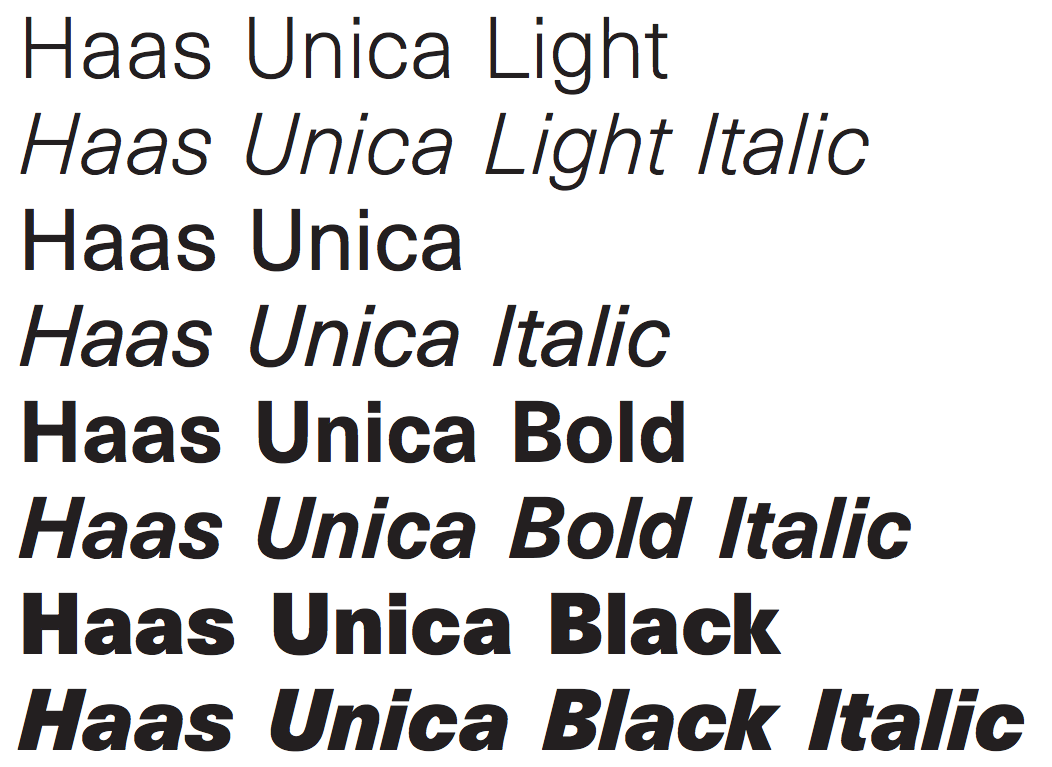
file name: Andre Gurtler Haas Unica 1980
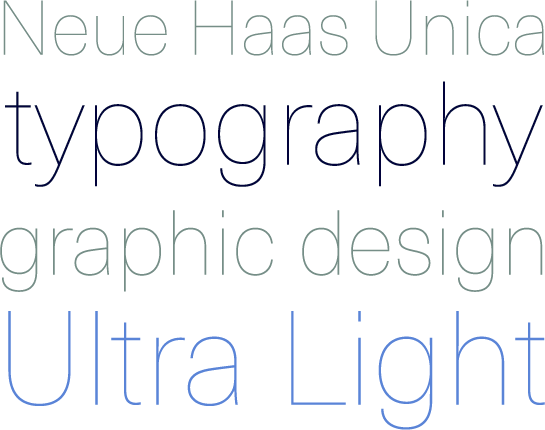
file name: Toshi Omagari Neue Haas Unica Ultra Light 2014

file name: Toshi Omagari Neue Haas Unica Ultra Light 2014b
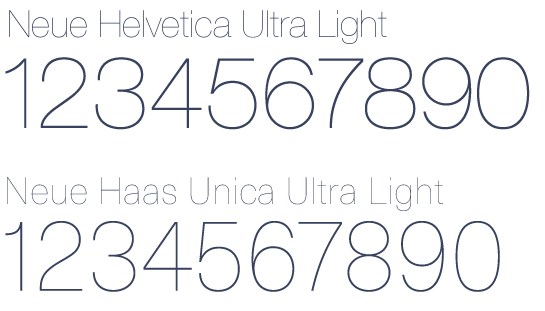
file name: Toshi Omagari Neue Haas Unica Ultra Light 2014c
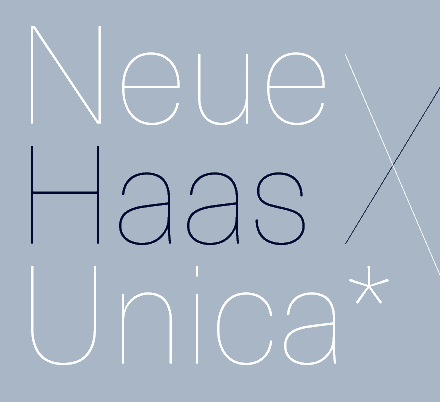
file name: Toshi Omagari Neue Haas Unica Ultra Light 2014f
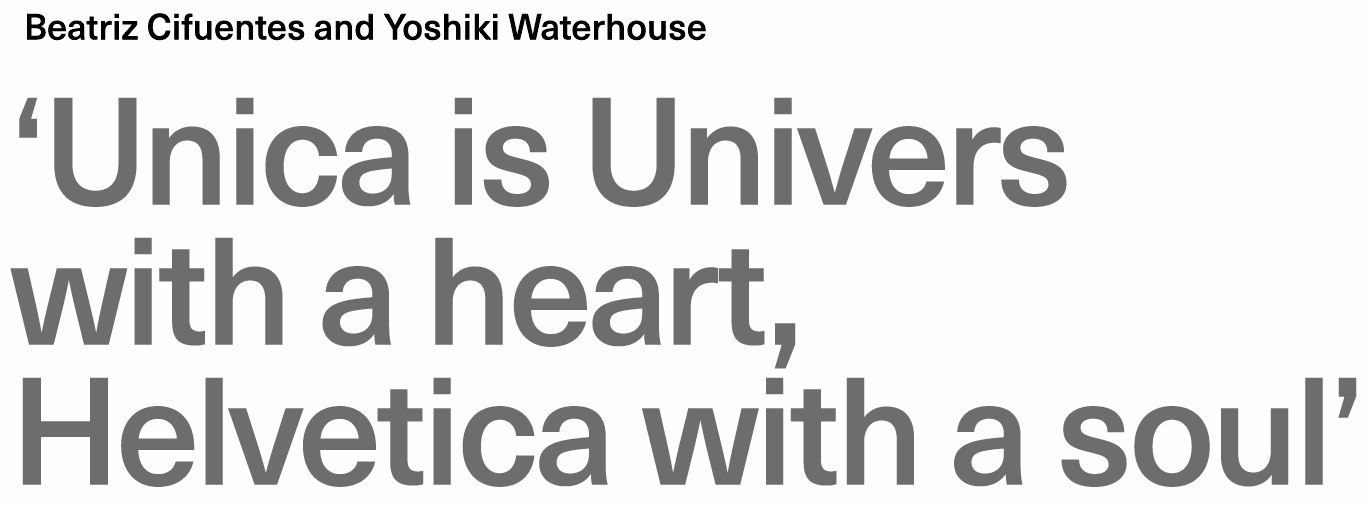
file name: Toshi Omagari Neue Haas Unica 2014

file name: Toshi Omagari Neue Haas Unica Pro Black 2014
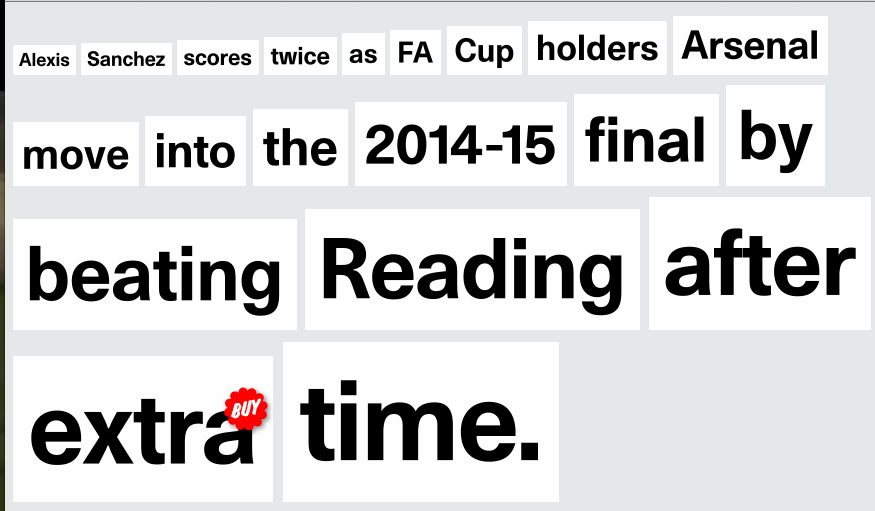
file name: Christian Mengelt Unica77 2012 2014
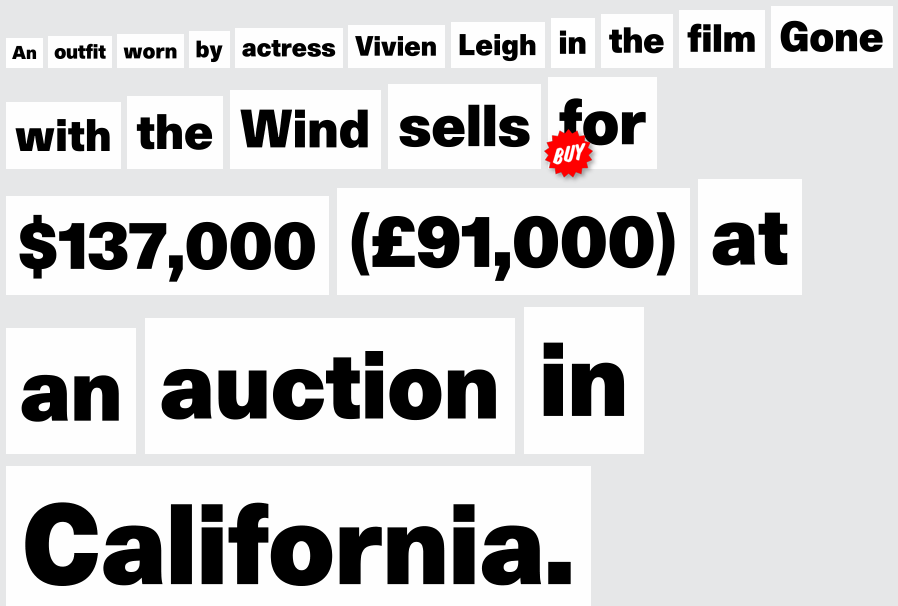
file name: Christian Mengelt Unica77 2012 2014b
| | |
|
Luc Devroye ⦿ School of Computer Science ⦿ McGill University Montreal, Canada H3A 2K6 ⦿ lucdevroye@gmail.com ⦿ https://luc.devroye.org ⦿ https://luc.devroye.org/fonts.html |

